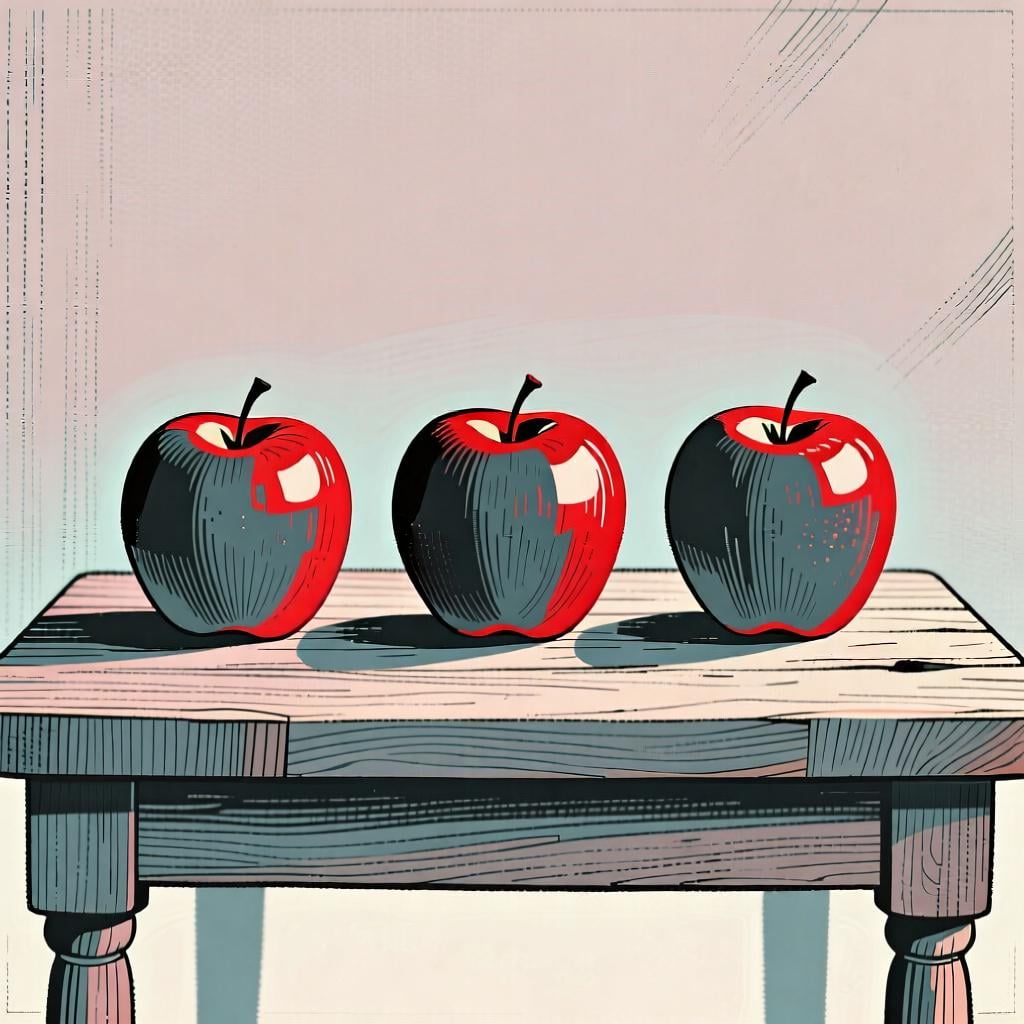tres
/tres/
three

Just like in English, 'tres' tells you 'how many.' Here, you see 'tres manzanas' (three apples).
📝 In Action
Tengo tres hermanos.
A1I have three brothers.
Necesitamos tres sillas más.
A1We need three more chairs.
La reunión es en tres días.
A2The meeting is in three days.
💡 Grammar Points
Always Stays the Same
'Tres' doesn't change, no matter what you're describing. It's always 'tres gatos' (for masculine things) and 'tres casas' (for feminine things).
⭐ Usage Tips
Counting and Times
You can use 'tres' for counting things ('tres libros') or telling time ('a las tres').

Here, 'tres' is used as a noun—the name of the number itself, just like saying 'the number three' in English.
📝 In Action
Mi número de la suerte es el tres.
A1My lucky number is three.
Saca un tres de la baraja.
A2Draw a three from the deck (of cards).
El niño ya sabe escribir el tres.
A2The child already knows how to write the number three.
💡 Grammar Points
Using 'el' with 'tres'
When you talk about the number 'tres' as a thing itself, you usually put 'el' in front of it, like 'el tres'.
✏️ Quick Practice
💡 Quick Quiz: tres
Question 1 of 1
Which sentence uses 'tres' as a noun (the name of the number)?
📚 More Resources
Frequently Asked Questions
Does 'tres' ever change for masculine or feminine words?
No, 'tres' is one of the easy ones! It always stays 'tres', whether you're talking about 'tres hombres' (three men) or 'tres mujeres' (three women).
How is 'tres' different from 'tercero'?
'Tres' is for counting how many things there are (one, two, three). 'Tercero' is for putting things in order (first, second, third). So you would say 'Tengo tres libros' (I have three books), but 'Vivo en el tercer piso' (I live on the third floor).